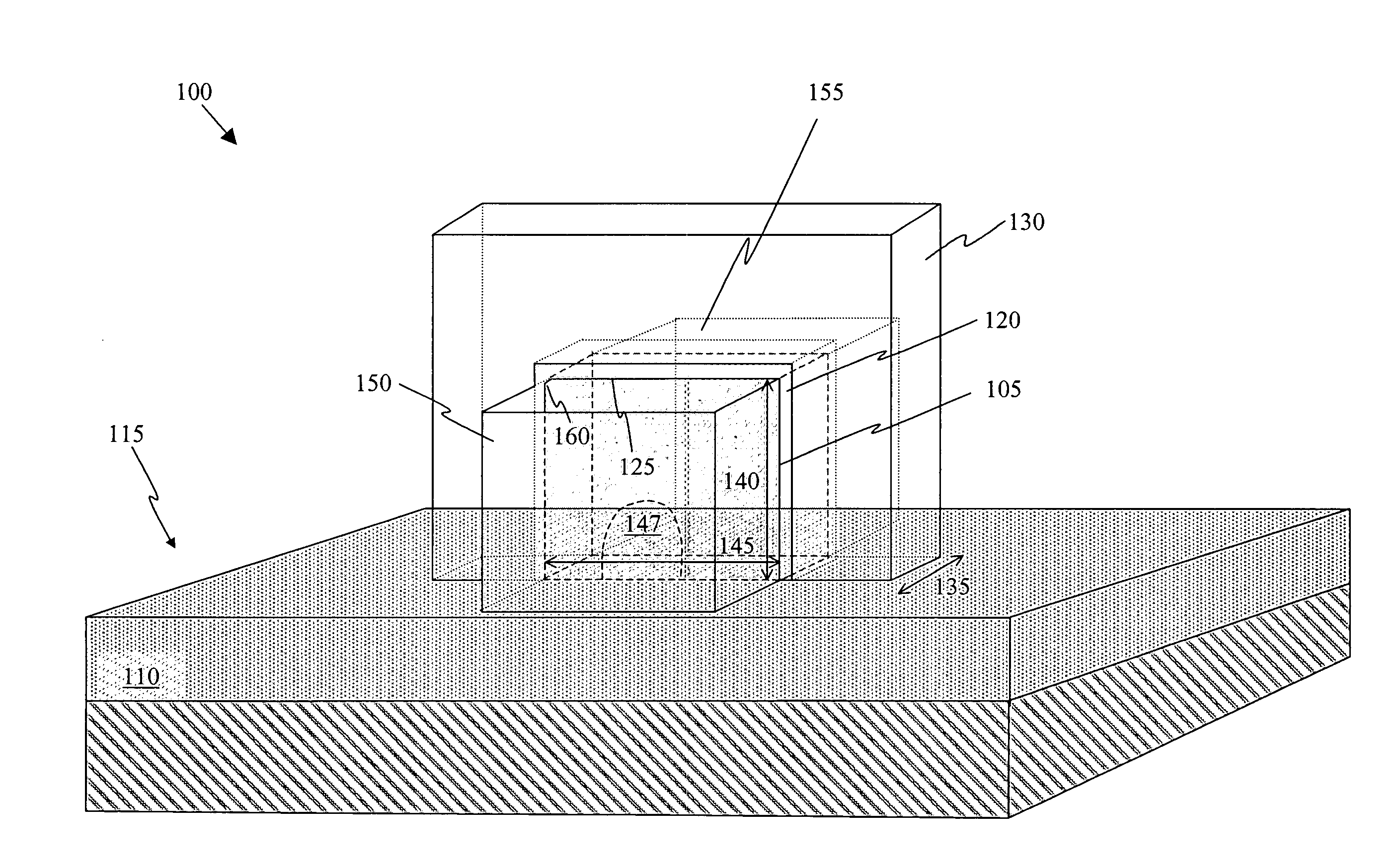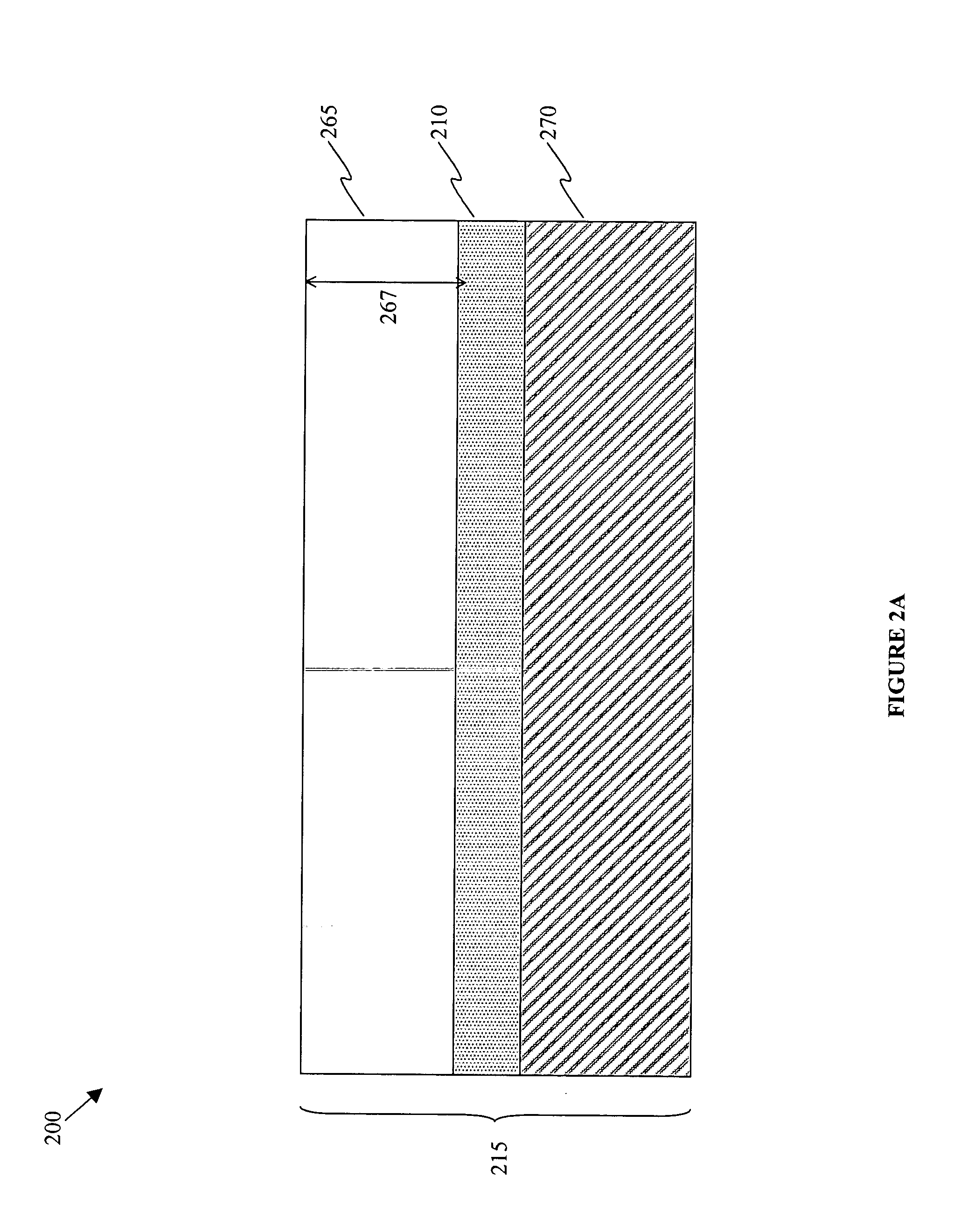Multi-gate one-transistor dynamic random access memory
a one-transistor, dynamic random access technology, applied in the field of memory devices, can solve the problems of increasing on-current and threshold voltage control, decreasing the dimension of transistor devices, and increasing the difficulty of dealing with short-channel effects
- Summary
- Abstract
- Description
- Claims
- Application Information
AI Technical Summary
Problems solved by technology
Method used
Image
Examples
Embodiment Construction
[0015] The present invention recognizes the advantageous use of a multi-gate structure to form a 1T DRAM device. For circuit speed, short gate lengths are desired. Multi-gate transistors offer better control in the channel of the body region, thereby mitigating the above-mentioned deleterious effects of short gate lengths. For instance, multi-gate logic transistors having gate lengths of less about 50 nanometers is highly desirable. It is well known that conventional multi-gate transistors are designed such that the gate workfunction causes the body region to be fully depleted of charge carriers. A fully depleted body region is necessary to get the full benefit of the multi-gate control of the channel. In addition, a fully depleted channel is generally considered to be desirable in logic transistors because this reduces or eliminates floating body effects associated with partially depleted transistors on silicon-on-insulator (SOI) substrates. However, before the present invention, i...
PUM
 Login to View More
Login to View More Abstract
Description
Claims
Application Information
 Login to View More
Login to View More - R&D
- Intellectual Property
- Life Sciences
- Materials
- Tech Scout
- Unparalleled Data Quality
- Higher Quality Content
- 60% Fewer Hallucinations
Browse by: Latest US Patents, China's latest patents, Technical Efficacy Thesaurus, Application Domain, Technology Topic, Popular Technical Reports.
© 2025 PatSnap. All rights reserved.Legal|Privacy policy|Modern Slavery Act Transparency Statement|Sitemap|About US| Contact US: help@patsnap.com



